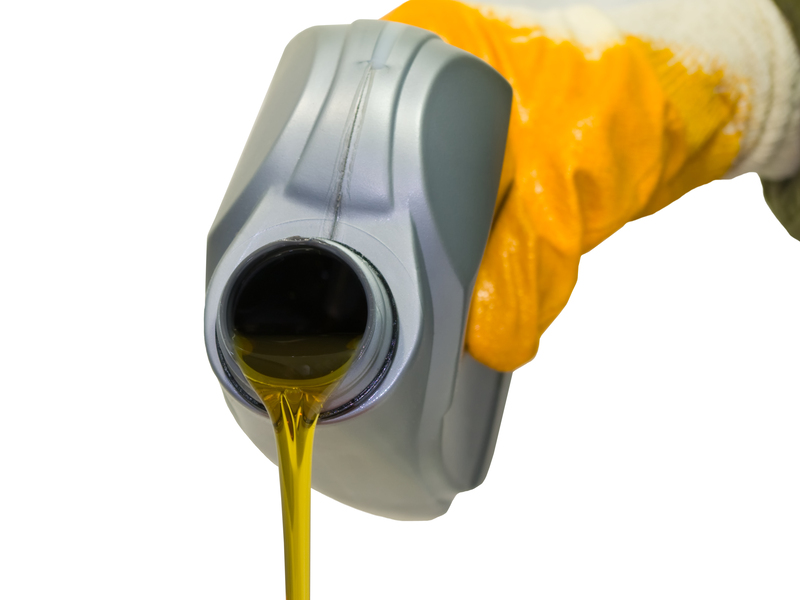Cardboard Recycling and Disposal Tips
Cardboard is everywhere--from shipping boxes and food packaging to shoe containers and cereal packages. With the rise of online shopping and home deliveries, managing cardboard waste has become even more crucial for sustainability. Properly recycling and disposing of cardboard not only helps conserve natural resources but also reduces landfill waste and minimizes environmental impact. In this comprehensive guide, we'll share essential cardboard recycling and disposal tips to help you make an eco-friendly difference in your home or business.
Why Cardboard Recycling Matters
Before diving into the best methods for cardboard disposal, it's important to understand why recycling cardboard is critical:
- Conserves Resources: Recycling cardboard saves trees, water, and energy.
- Reduces Landfill Waste: Cardboard is bulky and can quickly overwhelm landfills if not recycled.
- Cuts Greenhouse Gases: Recycling emits fewer greenhouse gases compared to producing new cardboard from raw materials.
- Promotes Circular Economy: Recycled cardboard becomes new products, supporting a more sustainable production cycle.

Types of Cardboard You Can Recycle
Not all cardboard is created equal. Understanding the kinds of cardboard that are recyclable helps ensure proper sorting and less contamination in the recycling stream:
Corrugated Cardboard
- Corrugated cardboard is the thick, sturdy material used for moving and shipping boxes.
- It has a wavy inner layer, called fluting, which cushions items during transport.
- This type is widely accepted in most curbside recycling programs.
Paperboard or Chipboard
- This is the thinner, single-layer cardboard found in cereal boxes, tissue boxes, and snack package boxes.
- It's typically recyclable but check with your local recycling center for specifics.
Waxed or Coated Cardboard
- Some cardboard used for produce or freezer foods has a wax or plastic coating for moisture resistance.
- This type is often non-recyclable and should be disposed of differently unless your facility accepts it.
How to Prepare Cardboard for Recycling
Improperly prepared cardboard can contaminate recycling loads and reduce the value of materials. Follow these simple but effective cardboard recycling tips:
- Remove Tape and Inserts: Take out any packing tape, labels, plastic windows, or non-cardboard materials. While a small amount may be acceptable, keeping it clean is best.
- Flatten Boxes: Break down large boxes to save space in your recycling bin and make transport easier.
- Keep it Dry: Wet or greasy cardboard (like pizza boxes) is hard to recycle and may need to be composted instead.
- Avoid Food Contamination: Cardboard stained with oil, cheese, or food residue cannot be recycled and should be disposed of or composted.
Where and How to Recycle Cardboard
When it comes to cardboard disposal and recycling, options vary depending on your location. Here are some common methods:
Curbside Recycling
- Most residential programs accept clean, flattened cardboard in the recycling bin.
- Check with your municipal waste program for specific instructions--some require separating cardboard from other recyclables.
Drop-off Recycling Centers
- If your curbside collection isn't available or won't accept certain types, many regions have drop-off sites or bins for cardboard recycling.
- Search for local recycling centers and confirm what types they accept.
Commercial Cardboard Recycling
- For businesses or larger volumes, consider hiring a service or installing a dedicated cardboard dumpster.
- Some companies offer pickup and transport of large cardboard bales for processing.
Cardboard Disposal Alternatives: Reuse & Composting
Recycling is not the only way to get rid of cardboard responsibly. Disposing of cardboard can involve creative reuse or composting, especially if the cardboard isn't suitable for traditional recycling.
Reusing Cardboard
- Storage and Moving: Use old boxes for organizing, moving, or shipping items.
- DIY Projects: Turn cardboard into crafts, kids' playhouses, magazine holders, organizers, or wall art.
- Gardening: Use layers of uncoated cardboard as weed barriers, mulch, or compost bin liners in your garden.
Composting Cardboard
- Shred or tear non-glossy, ink-free cardboard into small pieces and mix with other compostable materials. It acts as a good "brown" (carbon-rich) component.
- Avoid composting cardboard with wax, heavy dyes, or chemical coatings.
Common Mistakes in Cardboard Disposal
To keep your recycling efforts effective, avoid these frequent errors:
- Leaving Food Residue: Greasy boxes can ruin an entire recycling batch.
- Recycling Wet Cardboard: Water damages fibers, making recycling inefficient or impossible.
- Combining with Plastic Bags: Never bag cardboard or mix it with non-recyclables like styrofoam or bubble wrap.
- Not Flattening: Bulky boxes take up excess space and may be rejected by recycling trucks or facilities.
What Happens to Recycled Cardboard?
You might wonder: After putting cardboard in the recycling bin, where does it go? Here's a simplified overview of the process:
- Collection: Trucks collect cardboard from your curb or drop-off site.
- Sorting: Facilities separate cardboard from other recyclables and remove contaminants.
- Pulping: Cardboard is soaked, churned, and broken into fibers to form a pulp.
- Cleaning: The mixture is filtered and cleaned to remove inks and adhesives.
- Rolling and Drying: The pulp is pressed into sheets, dried, and rolled into new cardboard products.
Tips for Businesses: Managing Bulk Cardboard Waste
Companies and retailers typically generate large quantities of cardboard. Here are crucial cardboard recycling and disposal tips for commercial settings:
- Establish a clear collection and sorting process for employees.
- Invest in a cardboard baler for efficient storage and pickup.
- Negotiate pickups with local recycling facilities or waste management services.
- Train staff to recognize and remove contaminants.
- Encourage reduction of cardboard use in supply chains and switch to reusable containers where possible.
Frequently Asked Questions About Cardboard Recycling
Can you recycle pizza boxes?
Only the clean portions! If the box is soaked with grease and cheese, tear off and recycle the clean lid and dispose of or compost the soiled parts.
What if my cardboard got wet?
Wet cardboard damages recycling equipment and lowers the quality of recyclable material. If it's only damp, let it dry before recycling. If soaked, compost or dispose of it as trash.
Can I recycle cardboard with tape or staples?
Remove as much tape and staples as possible. Most recycling centers have systems that can filter out minor amounts of tape or metal, but cleaner cardboard is always better.
Is colored or glossy cardboard recyclable?
Check with your local facility. While many accept colored or printed cardboard, some glossy or laminated varieties, like certain gift boxes, may not be recyclable due to plastic coating.
Benefits of Sustainable Cardboard Disposal
Embracing eco-friendly cardboard disposal and recycling results in tangible benefits:
- Preserves forests by reducing the need for virgin wood pulp.
- Decreases pollution from landfills and incineration.
- Saves energy--recycling cardboard uses far less energy than making new products from raw materials.
- Supports jobs in recycling and manufacturing industries.
- Minimizes your household or business's carbon footprint.
Tips for Responsible Cardboard Use
- Buy recycled products: Favor packaging and paper goods made from recycled materials.
- Reduce consumption: Avoid excess packaging and request minimal shipping materials when possible.
- Participate in take-back programs: Return boxes to retailers or utilize programs that accept packaging for reuse or recycling.
- Educate others: Share tips with family, neighbors, and coworkers to improve community recycling rates.

Key Takeaways: Cardboard Recycling and Disposal Tips
- Always prepare cardboard for recycling by flattening, cleaning, and removing contaminants.
- Understand what kinds of cardboard you can recycle locally.
- Compost and reuse non-recyclable cardboard for environmentally friendly disposal.
- Encourage responsible practices at work and home to maximize recycling rates.
Conclusion: Make a Difference With Smart Cardboard Recycling
Cardboard recycling and disposal is a simple yet powerful way to contribute to a cleaner, more sustainable planet. By staying informed and adopting better practices, you ensure that your cardboard waste isn't just thrown away, but re-enters the supply chain as a valuable resource. Follow these cardboard recycling tips, educate those around you, and take pride in your role as an eco-conscious consumer.
Remember: Each flattened box, composted carton, or upcycled package brings us one step closer to a greener world. Start your journey today and make responsible cardboard disposal a part of your daily routine!